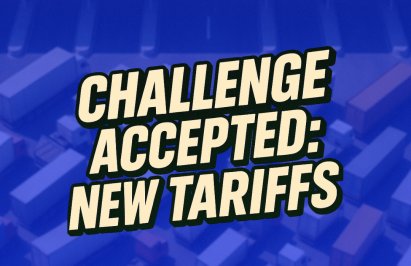
Route optimization technology has become one of the strongest tools to increase the efficiency of logistics and field service operations. If you have hundreds of orders to satisfy with different time and capacity restrictions, it’s beyond human capability to get your resources to customers on-time while making sure you are not overspending on fuel and fleet costs. Optiyol’s route optimization solutions reduce transportation costs and improve customer satisfaction through better Resource Selection, Order Allocation and Visit Scheduling.
Benefits:
- 15-25% savings in mileage
- 5-10% savings in fleet size
- Plans satisfy and balance multiple constraints and objectives
- The planned routes already account for estimated visit and driving times to minimize the gap between planned vs. actual routes.
- Automated and fast solutions that eliminate the time-consuming manual planning process.
- Improve on-time visits, reduce stockouts and lost sales, improve customer satisfaction
How it works?
Data related to customer orders, available fleet, road distances, travel times, and various business rules are processed by Optiyol planning engine to determine the right selection of fleet, right allocation of orders and right sequencing of visits. The data can be sent through our API or uploaded as files.
Order Data:
- Service type (Pickup, Delivery, Pickup&Delivery, Visit)
- Pickup location (Address, Opening-Closing hours)
- Delivery location (Address, Opening-Closing hours)
- Order size (e.g. Volume, weight, box, pallet)
- Time windows (Earliest arrival time, Latest departure time for service locations)
- Service times (e.g. Loading/Unloading times, installation time)
- Order priorities and lateness penalties
- Order features to model certain restrictions (e.g. Frozen product to be carried by a refrigerated truck)
- Fixed vehicle assignment (optional if the user wants only sequence optimization)
Fleet Data:
- Vehicle type
- Starting location
- Ending location
- Working hours
- Physical capacity (e.g. Maximum volume, weight, box, pallet, or limits on specific types of items)
- Availability
- Fleet features to model certain restrictions (e.g. Large trucks can not serve some streets in the city, or certain skillsets required to serve some orders)
- Cost of utilizing the fleet (e.g. fixed cost, variable cost per km, variable cost per hour, overtime cost)
Road Data:
- Travel distance and time among all locations
- Road preferences (e.g. shortest time/distance, car/truck, traffic options)
Business Rules and Preferences:
- Orders not to be carried together
- Locations not to be visited by the same resource
- Order and fleet compatibility (or skillset match)
- Optimization goals and driver preferences (e.g. balance optimality & practicality)
We do not only minimize the distance traveled, our solution is multi-objective that covers fleet acquisition costs, costs per mile, cost per time and lateness cost, as well as internally calculated scores on the complexity of the routes so that drivers can easily follow the routes as planned.
No more manual adjustments; just put all your business objectives, costs, rules, priorities, partially-fixed routes, and leave the rest to our optimizer which will balance everything for you in seconds.
Next-Gen Route Optimization
Logistics Technology
Route Planning


